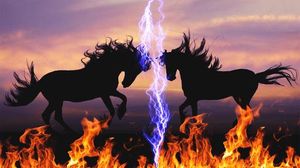Northern skies have beckoned astronomers for centuries, but nothing quite like the latest contribution from NASA's James Webb Space Telescope has turned heads. The Sombrero Galaxy, also known as Messier 104 or M104, has long been admired for its distinctive shape, reminiscent of a Mexican hat. Now, Webb's latest images present the galaxy with startling new details, shifting perspectives and deepening our cosmic knowledge.
NASA's sophisticated instruments have recently employed their Mid-Infrared Instrument (MIRI), which captured this renowned galaxy from over 30 million light-years away, situated within the Virgo constellation. Discovered by French astronomer Pierre Méchain back in 1781, the galaxy has always been notable for its bright core and smooth outer ring seen through earlier instruments like the Hubble Space Telescope.
What sets this image apart? Unlike its predecessors, Webb’s infrared capabilities allow it to detect longer wavelengths of light. This means details previously obscured are now brought to light. The image reveals the smooth inner disk of the Sombrero Galaxy, with its outer dust ring appearing clumpy and textured rather than the uniform haze observed through earlier observations. While Hubble showcased the glowing core of the galaxy, Webb's depiction showcases these outer structures, flipping our standard view of M104 on its head. The result? A fascinating new look often described as resembling more of a bull's-eye.
This new perspective offers exciting prospects for scientists trying to comprehend the formation and evolution of galaxies. The outer ring of the Sombrero Galaxy holds dust — which plays a pivotal role as the building blocks for stars and planetary systems. The Webb telescope has displayed its ability to resolve these seemingly chaotic dust patterns, hinting at how they may be structured throughout the galaxy.
Previously, the Spitzer Space Telescope, also under NASA's wing, observed the Sombrero Galaxy, recognizing the outer ring as smooth. Webb, on the other hand, makes it clear: the dust ring is clumpy, pointing to potential star-forming sites. Scientists have discovered carbon-containing molecules such as polycyclic aromatic hydrocarbons nestling within this dust, underscoring the intriguing possibility of stellar nurseries lurking here.
Star formation is, though, relative. Compared to galaxies like Messier 82, which birth ten times as many stars, the Sombrero remains relatively quiet on the star-making front, generating less than one solar mass per year. For clarification, that's the equivalent of the mass of our Sun, and it’s significantly less than the Milky Way's output of around two solar masses annually. This implies the Sombrero Galaxy may be more stable and less actively engaged in star formation over cosmic timescales.
Another interesting piece of the puzzle is the supermassive black hole residing at the core of the Sombrero Galaxy, which operates at less intensity compared to black holes found at the heart of other galaxies. Sources indicate this black hole slowly consumes surrounding material, intermittently ejecting bursts of radiation.
Webb has also captured the presence of around 2,000 globular clusters within the galaxy. These clusters are groups of aged stars tightly bound by gravity, offering astronomers perfect conditions to conduct comparative studies on stars of similar age yet distinct characteristics.
Having launched just over two years ago, NASA's James Webb Space Telescope is set to begin its fourth observing year soon. Its instruments are drawing interest from scientists worldwide eager to study exoplanets, their atmospheres, and other galactic wonders. The technological advancements brought about by Webb not only represent significant steps forward for cosmologists and astronomers but also stir excitement among space enthusiasts who eagerly await the stunning discoveries yet to emerge from this revolutionary space telescope.
What might these advancements reveal about our universe? The Webb telescope's long-sought data could very well pave the way for breakthroughs we haven't even begun to envision, as our cosmic adventures continue.



